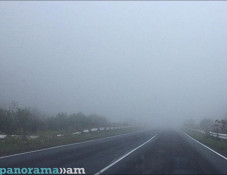
Plastic particles falling out of sky with snow in Arctic
Even in the Arctic, microscopic particles of plastic are falling out of the sky with snow, a study has found.
The scientists said they were shocked by the sheer number of particles they found: more than 10,000 of them per litre in the Arctic, BBC News reports.
It means that even there, people are likely to be breathing in microplastics from the air - though the health implications remain unclear.
The region is often seen as one of the world's last pristine environments.
A German-Swiss team of researchers has published the work in the journal Science Advances.
The scientists also found rubber particles and fibres in the snow.
Researchers collected snow samples from the Svalbard islands using a low-tech method - a dessert spoon and a flask.
In the laboratory at Germany's Alfred Wegener Institute in Bremerhaven they discovered far more contaminating particles than they'd expected.
Many were so small that it was hard to ascertain where they had come from.
The majority appeared to be composed of natural materials like plant cellulose and animal fur. But there were also particles of plastic, along with fragments of rubber tyres, varnish, paint and possibly synthetic fibres.
The lead scientist, Dr Melanie Bergmann, told BBC News: "We expected to find some contamination but to find this many microplastics was a real shock."
She said: "It's readily apparent that the majority of the microplastic in the snow comes from the air."
Microplastics are defined as those particles below 5mm in size.
Addressing their potential effects on people, Dr Bergmann explained: "We don't know if the plastics will be harmful to human health or not. But we need to take much better care of the way we're treating our environment."
The scientists also analysed snow from sites in Germany and Switzerland. Samples taken from some areas of Germany showed higher concentrations than in the Arctic.
Newsfeed
Videos






























